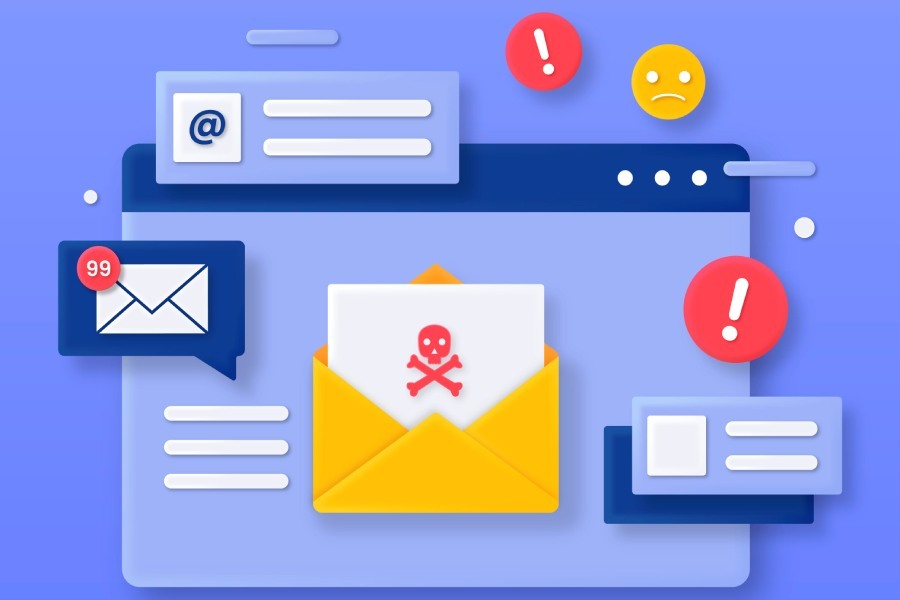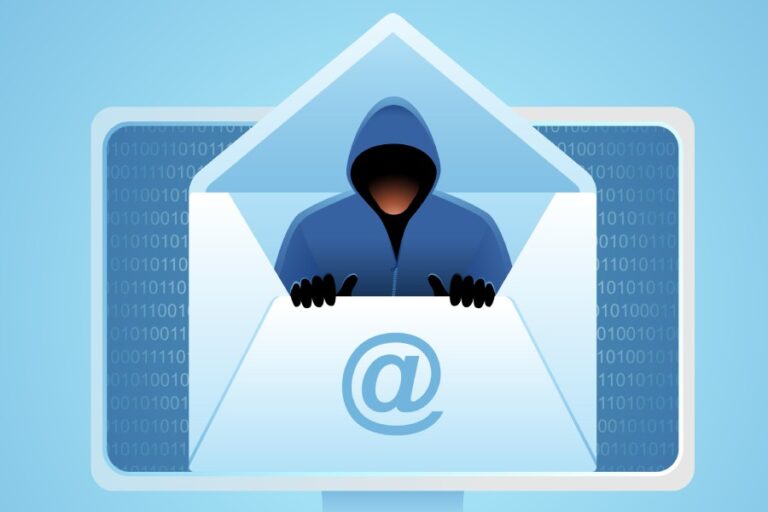Stop Email CEO Fraud: Essential Tips for Prevention and Security
In today’s fast-paced digital landscape, email scams have evolved from simple nuisances into serious threats to businesses of all sizes. Among these threats, CEO fraud stands out as particularly devious, targeting employees who may unknowingly assist in financial ploys just by clicking a link or responding to what appears to be a legitimate request. This kind of scam can happen to anyone—it’s like setting a snare for unsuspecting prey.
The good news is that by learning more about how these scams work and implementing effective preventive measures, organizations can drastically reduce their risk. In this article, we’ll explore essential tips for recognizing CEO fraud and fortifying your company’s email security. Keeping your business safe from cybercriminals isn’t just about technology; it involves every person within the organization being informed and alert. Let’s dive in!
To stop email CEO fraud, implement strong security measures such as SPF, DMARC, and DKIM protocols to authenticate emails, and conduct regular training sessions for employees to recognize suspicious communications. Additionally, establish a clear verification process for financial transactions and sensitive requests coming from executives to ensure authenticity before action is taken.
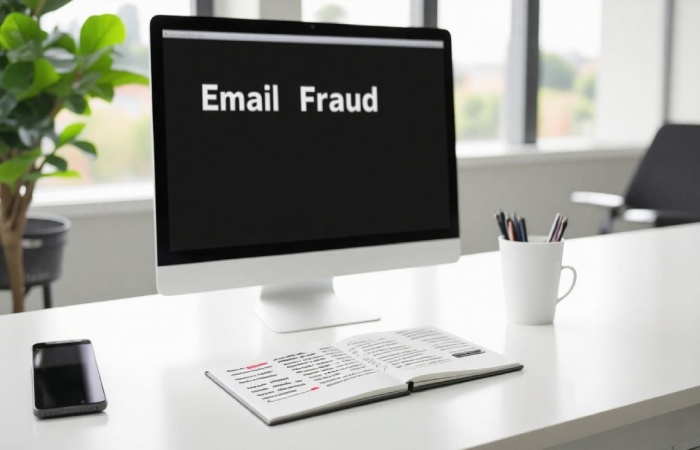
Common CEO Fraud Tactics
Among the various tactics used in CEO fraud, phishing and spear phishing are perhaps the most prevalent, with a significant escalation in their sophistication. Phishing scams typically utilize mass emails that mimic trusted sources—think banks or well-known vendors—to solicit sensitive information from unsuspecting employees. These emails often look legitimate enough to fool even the most discerning eye; they may contain company logos, familiar language, or specific deadlines. For example, an employee might receive a seemingly harmless email inviting them to verify their account details, which could lead to the loss of critical credentials.
Contrarily, spear phishing takes this tactic up a notch by narrowing its focus to specific individuals within an organization.
Phishing and Spear Phishing
Here, attackers gather personal details about their targets from social media and other online platforms to craft personalized messages. This targeted approach makes it far more likely for recipients to engage with these malicious requests. Imagine receiving an email that appears to be from your colleague, asking you to review a document located at a suspicious link. Since it feels credible, you click without hesitation—only to find yourself unwittingly allowing access to your confidential information or introducing malware into your company network.
Moving beyond personal layers of deceit, executive whaling represents a more focused assault on leadership personnel.

Whaling
Whaling aims specifically at high-level executives within organizations. Statistics indicate that around 20% of all phishing attacks target these individuals due to their access to substantial company data and funds. These attacks often involve highly crafted scams that impersonate legitimate business communication, demanding money transfers or sensitive information under the guise of urgency. For example, a CFO might receive a fabricated invoice from a trusted vendor requiring immediate payment—an unsuspecting transfer resulting in significant financial losses for the company.
Yet another layer of deception can be attributed to social engineering techniques that experts warn us about frequently.
Social Engineering
Social engineering encapsulates various manipulation tactics aimed at misguiding individuals into revealing confidential information. Kevin Mitnick points out that human elements often represent the weakest link in cybersecurity systems because while technology can provide robust defenses, people remain vulnerable to psychological tricks.
For instance, cybercriminals may leverage conversational norms and trust dynamics within an organization, prompting employees to disclose information they would typically safeguard. An employee might feel compelled to respond positively when someone impersonating their boss asks for sensitive documents under the pretext of an urgent project requiring immediate attention.
Understanding these tactics increases awareness among employees and protects organizational assets against CEO fraud. Continuing our exploration into prevention strategies will equip you with essential tools for improving security measures within your organization.
Technological Defenses for Email Security
First and foremost, implementing email authentication protocols like SPF, DKIM, and DMARC is essential in establishing a secure email infrastructure. These protocols act as guardians of your domain, defining legitimate senders and providing verification mechanisms that help protect your company from impersonation attacks.
For instance, SPF (Sender Policy Framework) defines which servers are authorized to send emails on behalf of your domain, preventing unauthorized sources from masquerading as legitimate senders. DKIM (DomainKeys Identified Mail) goes a step further by signing emails with a unique key that verifies their authenticity upon receipt, adding an extra layer of trust. Lastly, DMARC (Domain-based Message Authentication, Reporting & Conformance) ensures compliance with SPF and DKIM by providing instructions for handling emails that fail authentication checks. Together, these protocols create a powerful trifecta of protection against spoofed emails.
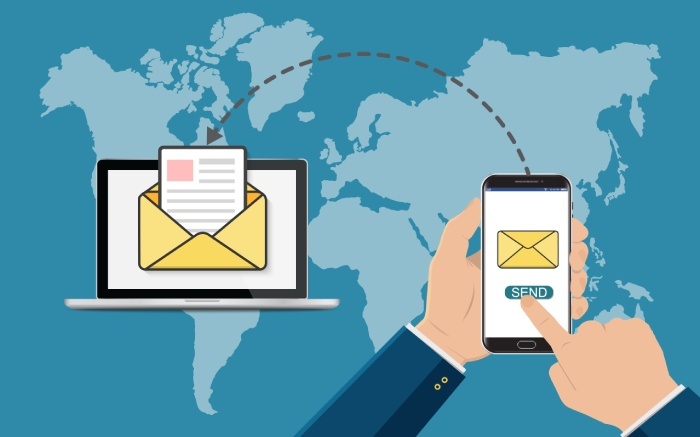
Now, it’s not enough to just set up these protocols; they need to be actively monitored and maintained.
Use Advanced Email Filters
Leveraging advanced email filters significantly enhances your defense against CEO fraud tactics. Configuring systems like Office 365 or Gmail to flag emails that originate from outside your organization claiming to be from executives allows for early identification of potential threats. By doing so, you create a barrier that isolates dubious messages, prompting immediate scrutiny before any interaction occurs.
These filters can look for not just sender domains but also behavioral anomalies typical of phishing attempts—such as suspicious language or unusual requests—that deviate from usual patterns established within your organization.
Think of it this way: A well-tuned filter can serve as a vigilant guard standing between the hackers and your sensitive information.
Additionally, incorporating machine learning algorithms into your email filtering system can help adaptively learn the normal communication patterns within your organization. This means it becomes better at identifying irregularities over time.
However, even with sophisticated defenses in place, it’s crucial to remember that technology alone is not enough to thwart all threats.
Continuous Upgrades and Training
Regular upgrades to both software and security practices are vital for staying ahead of evolving cyber threats. Cyber criminals are continually developing new methods to bypass existing defenses, so routine assessments and updates should be part of your cybersecurity strategy.
Implementing patches for known vulnerabilities in your email systems can significantly reduce the chances of exploitation. Furthermore, consider investing in comprehensive security training programs that equip employees with the knowledge they need to recognize potential threats. Organizations like KnowBe4 focus on this human aspect of security, teaching employees how to identify signs of phishing and other social engineering tactics.
As the saying goes, “An ounce of prevention is worth a pound of cure.” When it comes to securing email communication against CEO fraud, proactive measures through education can save businesses from costly mistakes.

By combining robust technological defenses with ongoing education and adaptability to new threats, organizations can build a resilient posture against CEO fraud—safeguarding not only their financial interests but also maintaining trust within their networks.
With these strategies firmly in place, the next critical focus is equipping your team with the skills to spot potential risks effectively.
Employee Training Programs
Employees are often the first line of defense against CEO fraud, making comprehensive training programs essential. Regular training not only helps employees recognize phishing attempts but also fosters a culture of security awareness throughout the organization. Imagine walking into your workplace where everyone is alert and informed; that’s the atmosphere proactive training creates. A well-structured program significantly reduces the risks associated with CEO fraud by empowering employees to understand how these scams operate and what signs to look for.
Regular Training Sessions
To achieve this, conducting frequent training sessions is key. Ideally, these should happen at least quarterly, as studies show that organizations implementing such updates see a 50% reduction in successful phishing attempts. The content should cover a variety of topics—from recognizing suspicious sender addresses to understanding nuances involving requests for sensitive information. Engaging methods, such as workshops or interactive modules, can enhance retention, ensuring employees don’t just memorize facts but truly understand them.
More importantly, once trained, employees must practice good habits consistently. This includes always verifying unusual requests for funds or sensitive data, no matter how legitimate they might appear on the surface.
Simulated Phishing Attacks
One effective strategy to reinforce learning is through simulated phishing attacks. Companies like PhishLabs offer services that can mimic real attacks to evaluate employee response effectiveness. These simulations expose employees to realistic scenarios without any actual risk, allowing them to practice recognizing and responding appropriately to threats. Afterward, reviewing and discussing the actions taken during these simulations as a team provides valuable feedback and further reinforces the lessons learned.
Educating your team is foundational; however, managing suspicious messages requires specific protocols that all employees should be familiar with.
To make this knowledge actionable, there should be clear guidelines on reporting potential phishing emails or fraudulent communication. Setting up an easily accessible reporting system encourages vigilance and ensures even novice users feel they play a crucial role in protecting the company.
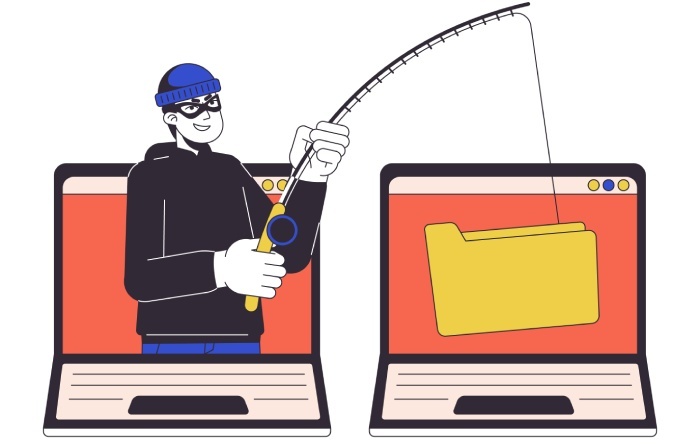
Cultivating a security-aware culture isn’t just about preventing losses; it’s about creating an empowered workforce ready to tackle cybersecurity threats head-on. By investing in ongoing training and simulation exercises, organizations establish a robust defense against CEO fraud while fostering trust among team members as they collaborate to protect their company’s assets.
Handling Suspicious Emails
When a suspicious email lands in your inbox, it’s essential to act swiftly and with caution. Responding impulsively can put your organization at significant risk. Your instinct may tempt you to click on an intriguing link or rush into a quick response, but this approach can lead to severe consequences.
The first rule is clear: Do Not Respond. Ignoring the impulse to reply is crucial. Engaging with a potential scammer may expose your email address and encourage more fraudulent attempts as they recognize engagement from their targets. Instead, take a moment to breathe and think through your next steps.
Once you’ve resisted the urge to reply, the next step is equally critical: Verify the Sender.
Reach out to the executive or sender through an alternative method—be it a phone call or a separate email address found on the company directory. This simple action confirms whether the request for funds or sensitive information was legitimate. This two-step verification process acts like a safety net, catching potential fraud before it reaps any harvest.
What happens if you confirm that the email is indeed fraudulent?
In this case, the next procedure is paramount: Report It to IT. Forwarding the suspicious email to your IT department provides them with critical data that can help identify trends or patterns in phishing attempts targeting your organization. Organizations with clear reporting mechanisms often experience up to a 50% reduction in successful phishing attacks.
This brings us back to the importance of consistency and having protocols in place.
Importance of Protocols
Implementing a well-defined protocol ensures that each employee knows exactly how to react when faced with suspicious correspondence. Whether it’s holding regular training sessions or creating an accessible guide on identifying phishing tactics, proactive measures foster an environment where everyone plays a role in cybersecurity. A culture of vigilance takes hold when individuals feel educated and equipped to tackle threats.
Every second counts when handling suspicious emails. By following these steps—not responding, verifying the sender, and reporting to IT—you significantly bolster your organization’s defenses against potentially devastating cyber threats.
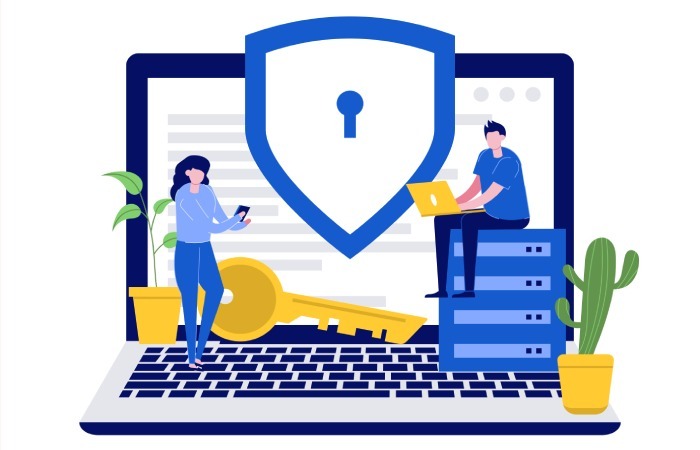
Building upon these foundational strategies allows organizations to strengthen their cybersecurity posture and remain vigilant against evolving threats.
Continuous Protection Strategies
When it comes to safeguarding against CEO fraud and other forms of cyber threats, establishing long-term defense strategies should be ingrained in the fabric of an organization’s policy. One of the cornerstones of effective cybersecurity is ensuring all software—particularly email clients—is regularly updated. Cybercriminals are relentless, constantly developing new methods and techniques, which makes staying current with software updates not just important, but critical.
Regular updates can patch vulnerabilities and add new security features, effectively fortifying your defenses. It’s akin to regularly changing the locks on your doors; if you don’t stay ahead of potential entry points, you leave yourself exposed. For instance, organizations that implement multi-factor authentication (MFA) while also maintaining updated software see a dramatic reduction in unauthorized access—by as much as 70%. This dual approach underscores the importance of keeping your systems secure while also adding layers of protection.
Another facet of continuous protection goes hand-in-hand with regular system updates: raising awareness among employees about these evolving threats.
To foster a culture of vigilance, conducting regular training programs is pivotal. Employees are often the first line of defense against cyber threats. By educating staff on recognizing the signs of phishing attacks, such as unfamiliar sender addresses or unexpected requests for sensitive information, you empower them to identify potential risks before they become serious issues. Additionally, organizations that routinely conduct phishing simulations report a 30% decrease in susceptibility to email fraud over six months—a significant improvement that demonstrates the impact of continuous education.

It’s essential to remind employees that cybercriminals use sophisticated social engineering tactics to manipulate their targets. The human element remains a vulnerability that hackers exploit; therefore, equipping staff with knowledge is one of the most cost-effective strategies for enhancing security. Emphasizing awareness not only mitigates risks but also fosters a sense of responsibility among employees for safeguarding sensitive information.
While education plays a crucial role, implementing robust technical measures cannot be overlooked.
Organizations should leverage technology to increase their defenses systematically. Employing protocols like SPF (Sender Policy Framework), DMARC (Domain-based Message Authentication, Reporting & Conformance), and DKIM (DomainKeys Identified Mail) helps authenticate emails and reduces the likelihood of successful impersonation attacks. These measures help flag any dubious emails claiming to originate from company executives or those containing sensitive company names, offering an electronic safety net against deception.
The synergy between employee education and technological defenses creates a comprehensive strategy against cyber threats while ensuring every member within an organization feels engaged and responsible for maintaining security standards.
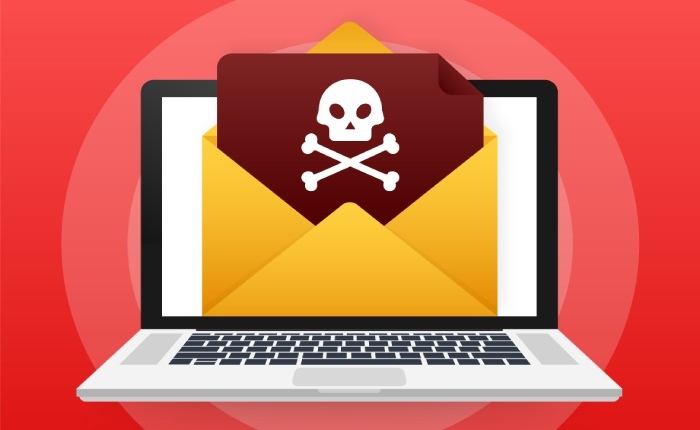
Roles and Responsibilities
The role of the IT department is crucial in safeguarding an organization from email threats like CEO fraud, but they shouldn’t shoulder this responsibility alone. The IT team is often at the forefront of developing and implementing security measures, crafting robust defenses against phishing attacks, and regularly updating protocols to counter evolving tactics. Additionally, they are responsible for training employees and establishing systems to flag suspicious emails that could lead to executive impersonation scams. However, their efforts can only be as strong as the culture of awareness fostered throughout the entire organization.
This brings us to the importance of involving leadership in these security efforts.
Leadership Involvement
CEOs should actively participate in cybersecurity initiatives. Although some might argue that their focus could be better directed elsewhere, having high-level executives involved in cybersecurity creates a protective umbrella over the entire company. The presence of leadership sends a clear message that cybersecurity is not just the IT department’s job; it’s everyone’s responsibility. Studies consistently show that when top management gets engaged—whether by participating in training sessions or advocating for security policies—the overall awareness among staff dramatically improves.
“When our CEO became vocal about cybersecurity,” says Jane Doe, an HR manager, “employees took it more seriously.” This illustrates that leaders wield significant influence over employee behavior and attitudes toward cyber safety. Should a leader prioritize security, it ignites a ripple effect throughout the ranks.
Balancing responsibilities among departments not only strengthens defenses but also solidifies organizational structure during crises.
By distributing roles effectively—between IT, leadership, finance, and HR—companies can build a cohesive front against cyber threats. This synergy ensures rapid responses to incidents and enhances trust within teams. For example, if the finance team recognizes unusual wire transfer requests but does not feel empowered to act on them due to lack of connection with IT or leadership, it could result in delayed reactions and significant losses. Therefore, constant communication between departments can foster an agile environment where quick reactions are facilitated by defined roles matched with overarching support from leadership.
Having established these foundational elements within an organization, we can now explore actual instances where these principles have either succeeded or faced challenges in real-world scenarios.
Real-Life Examples and Case Studies
A striking example of CEO fraud unfolded in 2022 when XYZ Corporation lost a staggering $1.5 million due to a well-crafted phishing email. The email impersonated their CEO, creating the illusion of urgency that convinced the finance department to transfer funds without proper verification. This incident exposed significant weaknesses in internal protocols. An internal audit revealed alarming lapses in email verification processes and insufficient employee training programs designed to recognize deceptive tactics.
Taking these costly lessons to heart, XYZ Corporation implemented a comprehensive multi-layered defense strategy. They began with regular employee training sessions aimed at raising awareness of phishing tactics and enhancing overall vigilance. Additionally, they integrated advanced email filtering systems to identify suspicious messages before reaching staff inboxes. These changes not only aim to protect financial assets but also empower employees with the knowledge needed to navigate potential threats effectively.
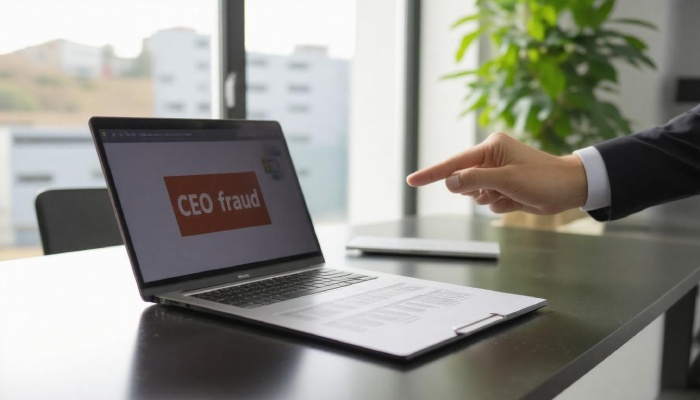
Each story we examine uncovers vulnerabilities but simultaneously provides solutions—emphasizing that proactive measures can significantly reduce the risk of falling prey to such schemes.
Another noteworthy case involved Gary Cox, CEO of Power Mobility Doctor Rx, LLC, who orchestrated a fraud targeting Medicare and other health insurance companies. Through false orders for medically unnecessary items, he billed over $1 billion to Medicare alone, with more than $360 million actually paid out based on these fraudulent claims. This case highlights how deception within high-level positions can lead to colossal financial losses and undermines trust in entire sectors.
It serves as a stark reminder of the importance of thorough verification processes when handling sensitive or financial information in any organization. Entities are learning from this case by adopting stricter protocols for reviewing transactions and implementing better checks on communication. Constant vigilance is paramount as technology evolves rapidly, thus creating new avenues for fraudsters.
Collectively, these real-life narratives illustrate not only the devastating impacts of CEO fraud but also the pathways that organizations can adopt to bolster their defenses against such vulnerabilities. Each incident has spurred organizations to reevaluate their practices, adapt smarter strategies, and position themselves against future attacks.
These examples underscore the pressing necessity for vigilance in safeguarding against CEO fraud, highlighting both the hazards and actionable strategies organizations can implement.
What technological tools can be implemented to detect and prevent email spoofing?
Technological tools such as DMARC (Domain-based Message Authentication, Reporting & Conformance), SPF (Sender Policy Framework), and DKIM (DomainKeys Identified Mail) are essential for detecting and preventing email spoofing. DMARC helps ensure that only authorized senders can use a domain, SPF verifies sending IP addresses, and DKIM provides an additional layer of authentication via cryptographic signatures. Implementing these protocols can significantly reduce the risk of email fraud, with studies indicating that organizations using DMARC can decrease phishing attacks by up to 75%.
What steps should a company take if they fall victim to an email CEO fraud attack?
If a company falls victim to an email CEO fraud attack, it should immediately notify its financial department and any affected employees, conduct an internal investigation to assess the extent of the breach, and report the incident to law enforcement. Additionally, they should implement measures to secure their email system, such as two-factor authentication and employee training on recognizing phishing attempts. According to a 2023 report, companies that acted swiftly after a fraud incident reduced their losses by up to 40%, highlighting the importance of prompt action in mitigating damage.
How can companies effectively train employees to recognize and respond to potential CEO fraud attempts?
Companies can effectively train employees to recognize and respond to potential CEO fraud attempts by implementing regular, interactive training sessions that simulate real-life scenarios. Research indicates that organizations with ongoing security awareness programs can reduce the likelihood of falling victim to such scams by up to 70%. By incorporating elements like phishing simulations, case studies, and clear reporting protocols, employees become more adept at spotting red flags, such as unusual requests for sensitive information or urgent transactions. Additionally, fostering a culture of open communication encourages employees to verify suspicious requests without fear of repercussion.
What specific tactics do scammers use in email CEO fraud schemes?
Scammers in email CEO fraud schemes often employ tactics such as impersonating the CEO’s email address, using similar domain names to trick employees, and creating a sense of urgency that pressures recipients into making quick decisions without verifying the request. They may also exploit shared information from social media or previous communications to create a more convincing narrative. According to the FBI’s Internet Crime Complaint Center, business email compromise (BEC) scams caused losses exceeding $1.8 billion in 2020 alone, highlighting the effectiveness of these tactics.
Are there any regulatory requirements for businesses regarding the protection against email scams?
Yes, businesses must comply with various regulatory requirements concerning email security to protect against scams, such as the General Data Protection Regulation (GDPR) in Europe and the California Consumer Privacy Act (CCPA) in the United States. These regulations mandate that companies implement appropriate security measures to safeguard personal data, which extends to protecting employees from email fraud. According to a report by the Cybersecurity & Infrastructure Security Agency (CISA), organizations that have implemented robust email authentication mechanisms see a reduction of up to 75% in phishing attempts, underscoring the importance of adherence to these regulations.

